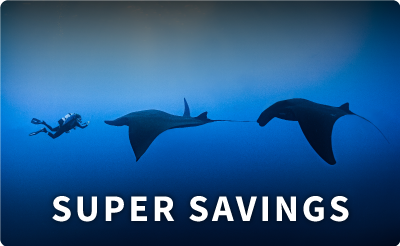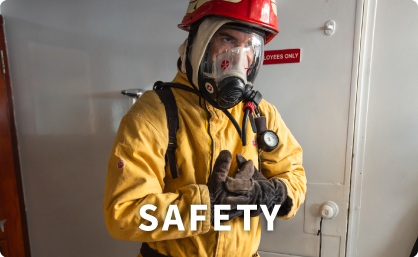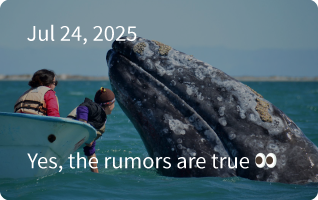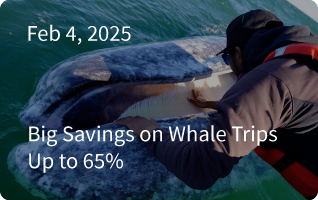Murderous Otters Prey on Seal Pups Serial killers elude marine experts Authorities were on the verge of apprehending the serial killer who has stalked the waters of Elkhorn Slough, molesting and drowning more than a dozen young victims. Then this marine murder mystery got murkier: Eyewitnesses spotted a second suspect. Both are adolescent males with similar physical descriptions, right down to their facial whiskers. The original suspect, identified only as Morgan, fits a classic prototype: abandoned by his mother and in and out of rehabilitation before puberty kicked in and caused aberrant proclivities. The second suspect, unnamed, is characterized simply as “wild.” Both remain at large.
What makes this case an ethical predicament for scientists is that both suspects are sea otters. As such, they enjoy a sort of diplomatic immunity because they are classified as threatened animals under the federal Endangered Species Act.
No such protection is afforded to the victims: harbor seal pups.
But as the death toll mounts, seal researchers are growing impatient for a remedy. At a minimum, they want the otters caught and fixed with radio transmitters so it will be easy to track their moves.
Forensic evidence and eyewitness accounts indicate that the offending otter molests the young seals, attempts rough sex with them and, ultimately, shoves their snouts underwater until they drown or die of shock trauma.
This is by no means normal otter behavior — it fact, it’s so bizarre that it’s almost unprecedented in the annals of science.
The otter called Morgan was a successful graduate of the Monterey Bay Aquarium’s Sea Otter Research and Conservation program to rehabilitate abandoned otters and then release them. The second otter remains an enigma, with nothing known about his background.
“Their motive is a mystery. All I know is we suddenly have a couple of otters killing seals at a fairly fast pace,” said Jim Harvey, associate professor at Moss Landing Marine Laboratories, which trains students from the California State University system.
“And if we get five or six of these otters in the slough, we won’t have a seal pup left.”
Already, the number of dead pups in Elkhorn Slough north of Monterey has doubled in recent months.
Necropsies on the slain seals reveal they were largely parasite-free and sported a healthy layer of blubber — in short, they appeared robust except for the bite marks and scratches evident on their snouts and the fact that their lungs filled with water.
Three months ago, aquarium researchers said they intended to capture Morgan,
insert a radio transmitter in his body and transport him to a place where he would have less opportunity for malicious mischief. They proposed placing him where there were fewer vulnerable seals and where he would have to work harder to survive — with less free time to get into trouble.
The U.S. Fish and Wildlife Service gave its requisite approval.
But the plan went awry for two reasons: the difficulty of netting feisty Morgan in the slough and the discovery of a homicidal sea otter from the wild.
The surfacing of a second suspect came as a bit of relief for aquarium researchers, who worried that their heroic rehabilitation efforts would somehow be blamed for contributing to the delinquency of a marine mammal.
“This doesn’t absolve Morgan of anything, but it gave us the feeling everybody was focusing on Morgan when he wasn’t the only culprit — in fact, this other animal seems to engage in the behavior more often,” said Andy Johnson, director of the aquarium’s Sea Otter Research and Conservation program.
It also left scientists — already a bit befuddled by Morgan’s actions — utterly at a loss to explain the phenomenon of not one but two serial killer otters working the same territory.
Could it be a case of mistaken identity, with witnesses pinning these pinniped purges on the wrong otter?
No, experts went out into the slough and observed two different animals, one with a flipper tag and another without any tags or tears where tags could have torn loose.
“I’m positive now there’s a second otter,” said Stori Oates, a graduate student studying juvenile harbor seals at the Moss Landing lab. She already has lost two of her research pups to otter attacks.
One of them, a male seal born in the slough last spring, fell victim to the wild otter, who was then seen carting the seal corpse around for two days, taking it on foraging odysseys and attempting to mate with it.
That matches the report of Dax Berg, a video game designer who read about Morgan in his Sept. 3 Sunday Chronicle and was so incredulous he set off to find him. From his kayak in Elkhorn Slough, he snapped photographs of one of the otters toting another victim.
“It was amazing — as if the dead seal was a trophy. He would not let the thing go,” said Berg.
Could it be that this otter behavior is not so unique after all?
“It would be a huge coincidence. Possible, but my gut tells me not likely,” said Harvey, noting that researchers have been observing otters pretty thoroughly along the Pacific Coast for years.
A few years back, scientists recorded one instance of two otters trying to mate with seals, but the pair, which lived off San Nicolas in the Channel Islands, appear not to have ever killed one.
If there clearly are two otters singling out seals in Elkhorn Slough, and if their aggression is unprecedented, could it be that the wild otter is a Son- of-Morgan copycat?
“Some folks are throwing out accusations against Morgan that he’s training the sea otter population to do this,” said the aquarium’s Johnson, who called the charge unscientific and irresponsible, given the lack of evidence of patterning.
“I have to think this sort of otter behavior has happened before and will happen again . . . when circumstances are conducive to it,” he said.
Whatever the explanation, scientists, ultimately, must decide what to do about both otters.
Aquarium researchers began one expedition in the slough with a team of capture specialists from Alaska, but failed to snare Morgan. Elsewhere, deep sea divers have captured otters with the aid of underwater scooters and a modified soccer net, but Elkhorn Slough might lack the water depth and visibility necessary for that technique.
“Morgan’s going to be very difficult to capture up there,” Johnson said, unless the otter journeys into a back channel or is sleeping at the precise time a crew tries to take him.
The aquarium isn’t prepared to initiate an all-out hunt for Morgan, but is on alert to capture him if he returns to the aquarium’s tide pools and to install a radio transmitter in his abdomen.
It’s unclear now whether Morgan will be relocated, and even more uncertain that he would stay put if he is transported elsewhere.
Oates said she’d prefer the offending otters be radio-tagged and then returned to the slough, where their actions can be closely monitored. “This is an extraordinary research opportunity,” she said.
“I’d rather have the animals removed from the wild,” said Harvey. They could be placed in a museum or aquarium, although he acknowledges it’s harder to argue persuasively for bold human intervention now that one of the identified perpetrators is a wild animal.
“I just would hate for everybody to let this situation slide (until) the spring seal pupping season comes around again,” he said. “Pupping season starts in March — we’re getting closer all the time.” This article appeared on page A – 19 of the San Francisco Chronicle |








